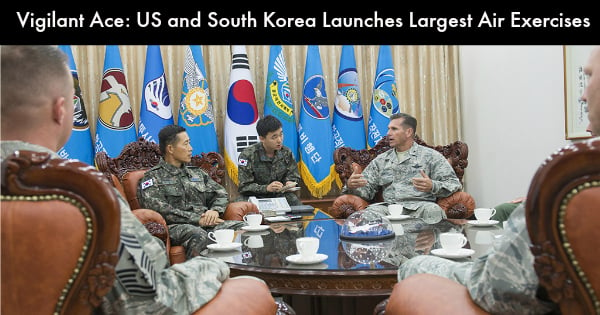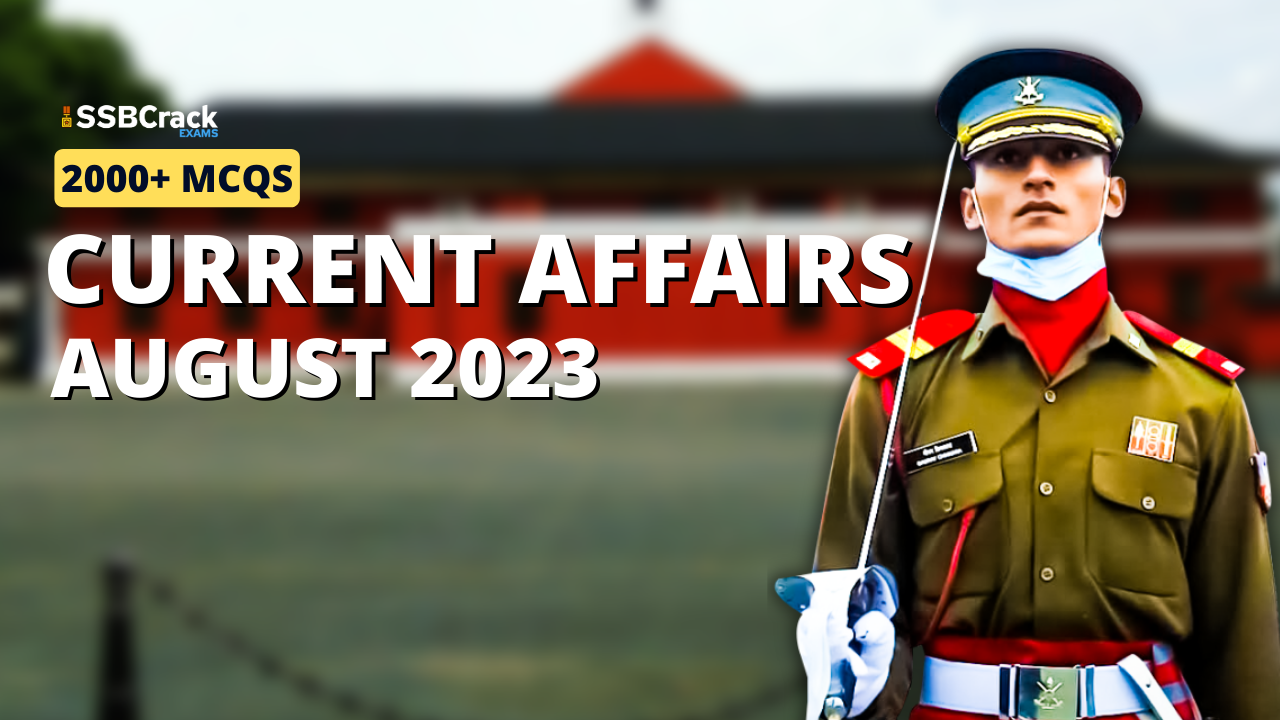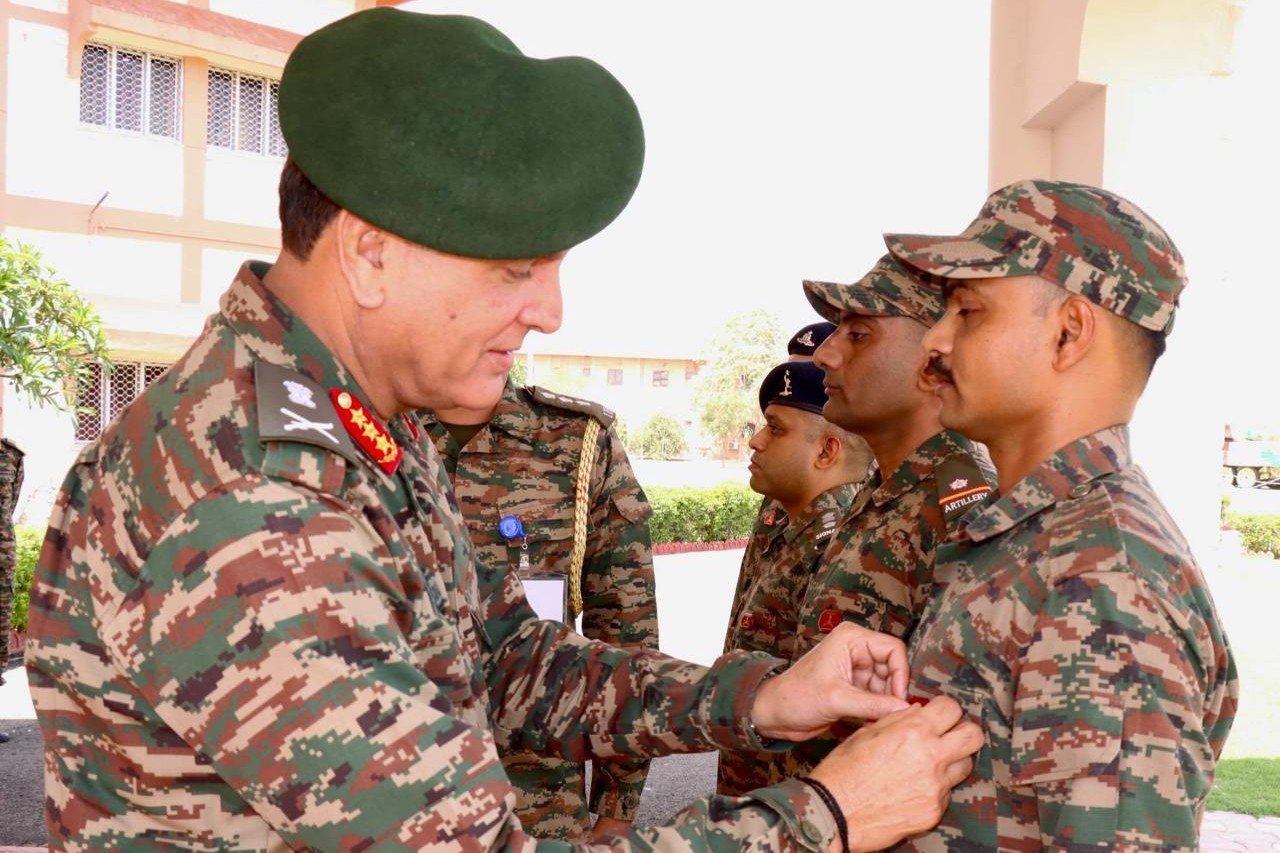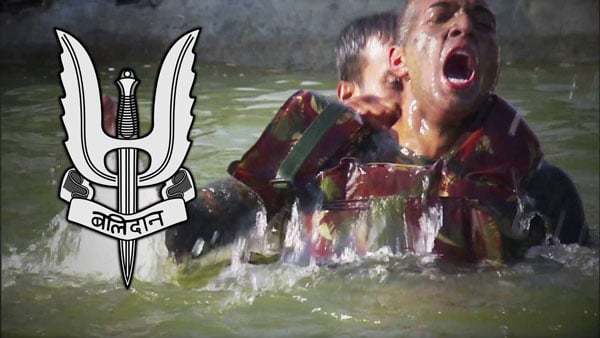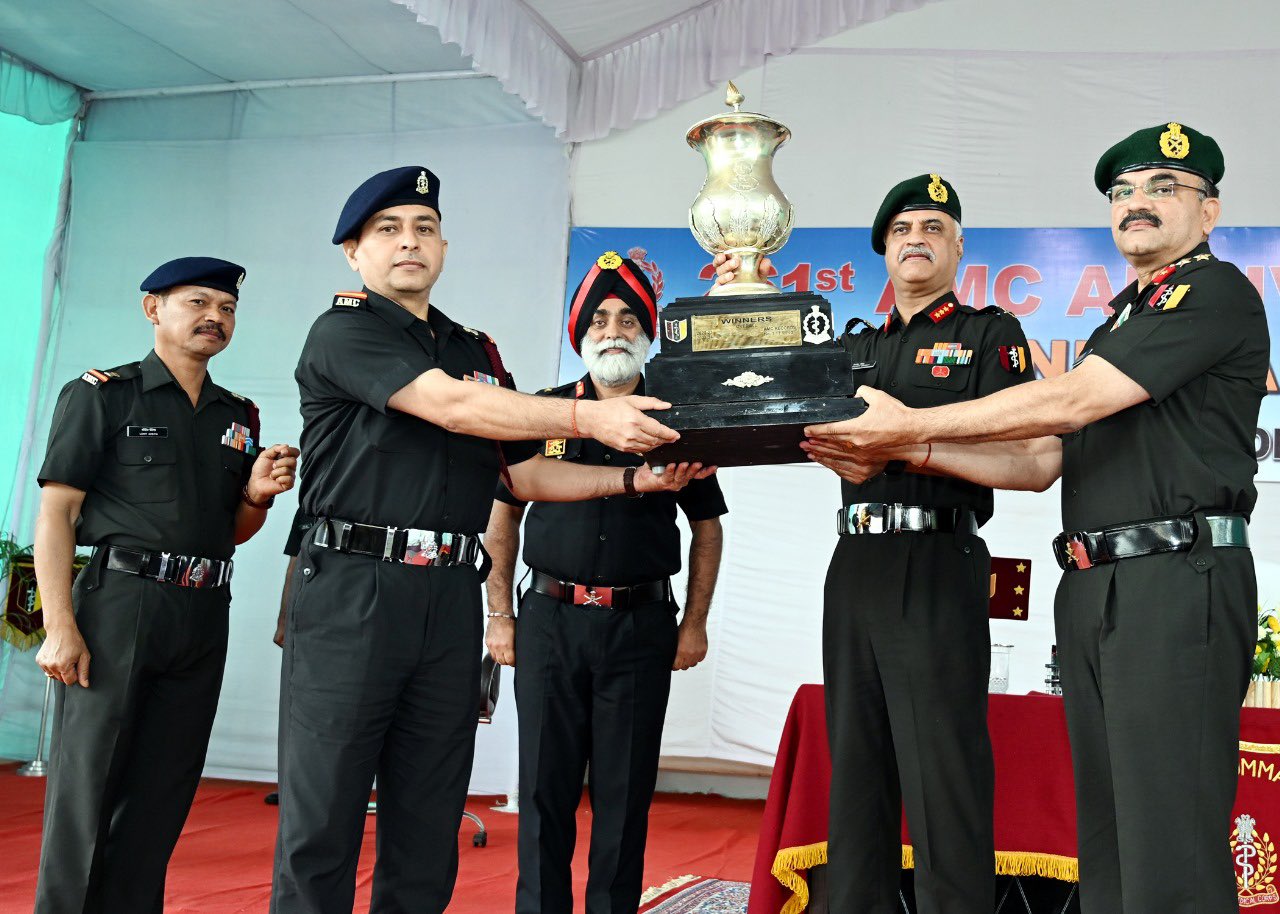The largest ever joint air exercise between South Korea and the United States – Vigilant Ace 18 – has kick stared after North Korea tested its most advanced and powerful Inter Continental Ballistic Missile, Hwasong-15.
The rogue nation North Korea has performed six increasingly powerful nuclear tests since 2006. The latest on was in September 2017 which introduces Hwasong-15 to the world. Four of these atomic tests were overseen since Kim Jong-Un took over in 2011, along with over a dozen missile tests.
The following month, in November 2017, North Korea claimed that it can strike anywhere in US mainland with Hwasong-15 ICBM which is capable of delivering a “super-large” nuclear warhead.
The largest ever air drills focus on enhancing their operational readiness and to ensure peace and security on Korean peninsula.
The Exercise Vigilant Ace 2018:
It is the third such annual exercise between US and ROK. Earlier named as Beverly Bulldog, the exercise kicked off on 4th December and will go on till 8th December. It will include enemy infiltration and precision strike drills with South Korean jets across eight military installations.
This time, it is being conducted on such a massive scale that larger than 12,000 United States service members will join South Korea’s airmen in the air combat exercise. The 12,000 member US contingent will have personnel from US Air Force, US Marine Corps and US Navy.
The Aircrafts:
The total aircraft being used for the exercise are about 230. It includes 6 F-22 Raptors and 18 F-35 Lightning II fighter jets. An unknown number of F-16 Fighting Falcon fighter aircraft, assigned to the 36th Fighter Squadron, are also deployed during Exercise Vigilant Ace.
The F-35 is the newest fighter in the US Air Force inventory. Of 18 F-35s, 6 are F-35A of US Air Force and 12 are F-35B from US Marine Corps. The fighters have flown to Korean Peninsula from Kadena Air Base on Okinawa, Japan.
Other aircrafts taking part in the exercises are the U.S. Air Force’s F-16C/D Viper and F-15C Eagle fighter jets and A-10 Warthog ground attack aircraft. The U.S. Marine Corps’ and US Navy’s F/A-18 Hornet and EA-18G Growler electronic warfare aircraft will also take part in the exercise.
South Korea will be represented by F-15K Slam Eagles and KF-16 Vipers, along with is aging F-4E Phantom IIs. Apart from the fighters, South Korea’s aerial refueling tankers, E-3 Sentry airborne command and control planes, and various intelligence platforms are also part of the 230 total aircraft taking part in the drills.
The US aircraft along with the South Korean aircrafts, began flying mock missions from 8 air bases in South Korea – Kunsan, Daegu, Gwangju, Cheongju, Jungwon, Seosan, Osan, and Wonju.
According to a press release, these jets will be key in neutralizing surface-to-air missile sites in order to pave the way for follow-on strikes by non-stealthy jets. Electronic warfare aircraft such as the EA-18G could help suppress enemy air defenders who escape the initial round of attacks and American and South Korean aircraft could use stand-off cruise missiles and other weapons to attack those sites while still staying as far away from the threat area as possible.
Army also Participating:
Apart from the air force, the South Korean army’s K-55 self-propelled artillery vehicles are also taking part in a military exercise near the demilitarized zone. This zone separates North Korea from South Korea.
About Hwasong-15:
The Hwasong-15 ICBM is developed by North Korea, had its first flight on 28 November 2017. It is the first ballistic missile developed by North Korea which can reach the US Mainland.
During the test, the missile reached an altitude of around 4475 km and traveled about 950 km downrange with a flight time of 53 minutes. However, the missile’s re-entry vehicle failed to successfully re-enter the Earth’s atmosphere as it broke apart into pieces before crashing into the waters within Japan’s exclusive economic zone.
According to analysts, The Hwasong-15 first stage has a gimbaled two-chambered main engine system, as opposed to the Hwasong-12 and Hwasong-14 which have one fixed main chamber and four gimbaled steering vernier thruster chambers. Its first stage booster design is strikingly similar to the Titan II missile. The new propulsion is estimated to have 170 percent increase in thrust, compared to the Hwasong-14.
Senior South Korean official confirmed that the missile is using advanced technology comparable to F-22 as engine uses gimbals.
Analysts and experts note that the protection cover for re-entry vehicles may have been designed with -multiple warheads in mind.
The 9 axle Transporter erector launcher (TEL) vehicle is larger compared to the 8 axle TEL vehicle of the Hwasong-14. However, just like the Hwasong-14, the launch footage indicates the missile was fired from a fixed launch pad, not from the vehicle.
The Rising Conflict:
The months-long nuclear standoff between Kim Jong-Un and Donald Trump has also raised concerns of another conflict. The last conflict was more than six decades ago when 1950-53 Korean War left much of the Korean peninsula in ruins.
According to a spokesperson of 7th Air Force, “the exercise is designed to ensure interoperability between Republic of Korea and U.S. airmen, as well as to build readiness to defend the Republic of Korea from a North Korean attack.” This hints towards a major conflict coming up in the area. The exercises have been condemned as a provocation by the isolated North Korea.
The North Korea’s foreign ministry spokesman responded that the Trump administration was “begging for nuclear war by staging an extremely dangerous nuclear gamble on the Korean peninsula” and said the drill would “push the already acute situation on the Korean peninsula to the brink of nuclear war”.
What do you think?
It is to be noted that North Korea could launch an artillery attack on the South Korean capital Seoul which is only about 50 kms from the heavily-fortified North-South border. The capital is also home to 10 million people.
Do you think US and Republic of Korea are doing a right thing preparing for a war or do you think that exercises like these will just increase tensions in the area and provoke each other for a nuclear war?

